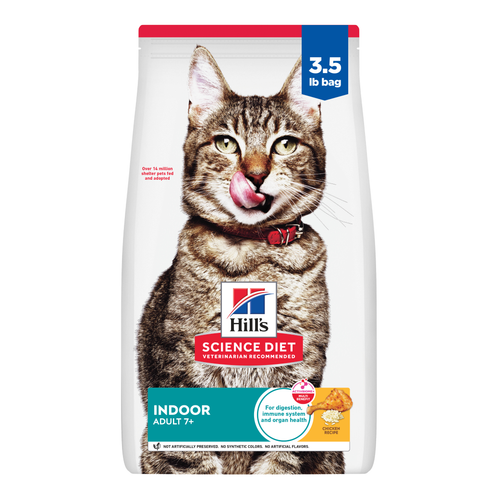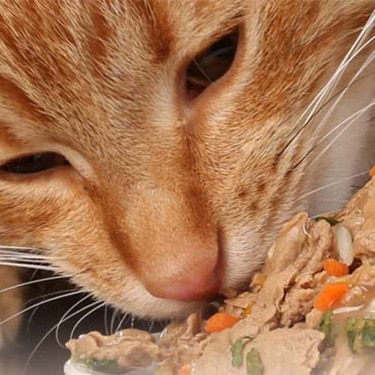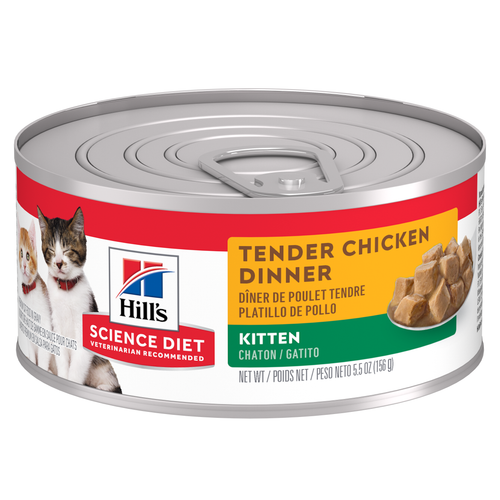
-
Find the right food for your petTake this quiz to see which food may be the best for your furry friend.Find the right food for your petTake this quiz to see which food may be the best for your furry friend.Featured products
 Adult Large Breed Chicken & Barley Recipe Dog Food
Adult Large Breed Chicken & Barley Recipe Dog FoodSupports healthy joints, lean muscle, and beautiful coat for large breed dogs
Shop Now Adult Chicken & Barley Recipe Dog Food
Adult Chicken & Barley Recipe Dog FoodSupports lean muscle and beautiful coat for adult dogs
Shop Now Hill's Science Diet Adult Chicken & Beef Entrée Dog Food
Hill's Science Diet Adult Chicken & Beef Entrée Dog FoodChicken & Beef Entrée in a delicious loaf with complete & balanced nutrition to help keep adult dogs active and healthy
Shop NowFeatured products Senior Vitality Adult 7+ Tuna & Vegetables Stew
Senior Vitality Adult 7+ Tuna & Vegetables StewImproves Everyday Ability to Get Up & Go
Shop Now Adult Turkey & Liver Entrée Cat Food
Adult Turkey & Liver Entrée Cat FoodPrecisely balanced nutrition with the delicious taste of minced turkey & liver to help fuel the energy needs of cats during the prime of their life
Shop Now Adult 7+ Indoor Chicken Recipe Cat Food
Adult 7+ Indoor Chicken Recipe Cat FoodSupports energy level and beautiful fur in mature indoor cats
Shop Now -
Dog
- Dog Tips & Articles
-
Health Category
- Weight
- Food & Environmental Sensitivities
- Urinary
- Digestive
- Joint
- Kidney
-
Life Stage
- Puppy Nutrition
- Adult Nutrition
- Senior Nutrition
Cat- Cat Tips & Articles
-
Health Category
- Weight
- Skin & Food Sensitivities
- Urinary
- Digestive
- Kidney
-
Life Stage
- Kitten Nutrition
- Adult Nutrition
Featured articles The Science Behind Our Love for Pets
The Science Behind Our Love for PetsLearn the scientific reasons why we have such strong connections with our pets, and what science says about the love between humans and our furry friends.
Read More What Is Littermate Syndrome? Pet Adoption Guide
What Is Littermate Syndrome? Pet Adoption GuideLearn more about littermate syndrome in dogs and cats and how to successfully navigate adoption and early socialization processes.
Read More How to Properly Mix Wet & Dry Pet Foods
How to Properly Mix Wet & Dry Pet FoodsAn Orange cat eating from a bowl filled with mixed food
Read More -


Of all the cat myths and misconceptions out there, one of the most persistent is that cats have lives to spare. But do cats really have nine lives? And what is the meaning behind that famous saying? Let's break down the origins and realities of this myth.
History of the Nine Lives Legend
Do cats really have 9 lives? The short answer is no, but there's something so beguiling about a cat's demeanor that makes it seem almost possible that they could have extra lives.
Ancient Origins of a Cat's Nine Lives
The proverb that started it all states: "A cat has nine lives. For three he plays, for three he strays, and for the last three he stays."
As with most oral storytelling, there is no evidence of when or where this famous English quotation was first documented. However, William Shakespeare knew about the saying because he referenced it in his play Romeo and Juliet, written in the late 16th century: "Good king of cats, nothing but one your nine lives." Because of this, the myth predates the late 1500s and possibly has ancient origins.

What we do know, notes Science magazine, is that the fascination with cats dates way back to about 12,000 years ago in the homes and places of worship of the ancient Egyptians. The Egyptians saw their feline friends as divine creatures with supernatural powers. Most notably, the goddess Bastet's ability to change from human to cat and back again may have promoted the idea that cats have multiple lives because she kept appearing and reappearing.
This mystical nature then seems to have followed the domestic cat during its migration from the Middle East through Greece, China and into Europe, eventually spreading into all corners of the world. By the time cats made their way to England, however, they were revered more for their ability to ward off rodents than to reincarnate. Despite their work as mousers, cats retained their air of mystique.
Why Nine Lives?
Why do they say cats have nine lives? The number nine holds significance in numerology, especially due to its composition of three groups of three, like the structure of the English proverb. Nine is also symbolic in Islamic, Greek and Roman Catholic cultures, to name a few. If a cat "comes back to life" multiple times, the number nine makes sense when looked at from a mystical point of view. Additionally, early Anglo-Saxon settlers of England (originally called Angle-lond), used the number nine in both legal and literary contexts, says Encyclopedia Britannica.

But in Spain, says Pet Plan UK, you'll hear that cats have seven lives (another number full of symbolic meaning), and Arabic and Turkish legends claim six lives. Despite the differences in the number of lives a cat supposedly has, there exists the one common underlying belief: Cats live more than one life.


Tasty Tips
Cats in Action
Despite being a myth, why do they say cats have nine lives? And why do people believe it? As any cat parent can tell you, all you have to do is observe a cat's ability to leap, twist and land on their feet to see why this myth is a lasting legend.
Cats have almost a supernatural ability to move from a low, crouching position to a high, long leap in a matter of seconds. This isn't due to magical powers: It's their biological make-up. Their impressive jumping skills are due to the muscle mass and the length of their hind legs. Your cat's back legs are so strong that they easily can leap six times their height!
No matter how spectacular their leaping skills are, keep in mind that cats are not indestructible and don't always land on their feet. Do they leap on your closet doors, cabinets or fridge? Deter them from this behavior by cat-proofing your house, such as not placing tempting items like toys, treats and catnip in high places. Your pet can and will try to get them, so best to keep them out of sight or at a low profile. Invest in a cat tree or condo as an outlet for their leaping and climbing skills.
Your cat's daredevil antics can be fun to watch, but engaging them in safe play goes a long way to making your feline friend's life a happy and healthy one.


Christine O'Brien is a writer, mom, and long-time cat parent whose two Russian Blues rule the house. Her work also appears in Care.com, What to Expect, and Fit Pregnancy, where she writes about pets, pregnancy, and family life. Find and follow her on Instagram and Twitter @brovelliobrien.
Related products

Precisely balanced nutrition with the delicious taste of minced turkey & liver to help fuel the energy needs of cats during the prime of their life

Improves Everyday Ability to Get Up & Go

Delectable chunks with tender chicken smothered in a rich gravy

Supports energy level and beautiful fur in mature indoor cats
Related articles

When you adopt a cat, you don't just gain a best friend; you also save her life. Here's why getting a cat from a local animal shelter makes so much sense.

Learn how to litter train a kitten with this guide to potty training, including when to start litter training kittens and troubleshooting tips.

Discover which cat toys games your feline friend might like, and how they are great sources of exercise. Explore our library of articles to learn more.

Discover how to train your cat, starting with very basic first steps that both reward good behavior and discourage the bad.

Put your cat on a diet without them knowing
Our low calorie formula helps you control your cat's weight. It's packed with high-quality protein for building lean muscles, and made with purposeful ingredients for a flavorful, nutritious meal. Clinically proven antioxidants, Vitamin C+E, help promote a healthy immune system.
Put your cat on a diet without them knowing
Our low calorie formula helps you control your cat's weight. It's packed with high-quality protein for building lean muscles, and made with purposeful ingredients for a flavorful, nutritious meal. Clinically proven antioxidants, Vitamin C+E, help promote a healthy immune system.

